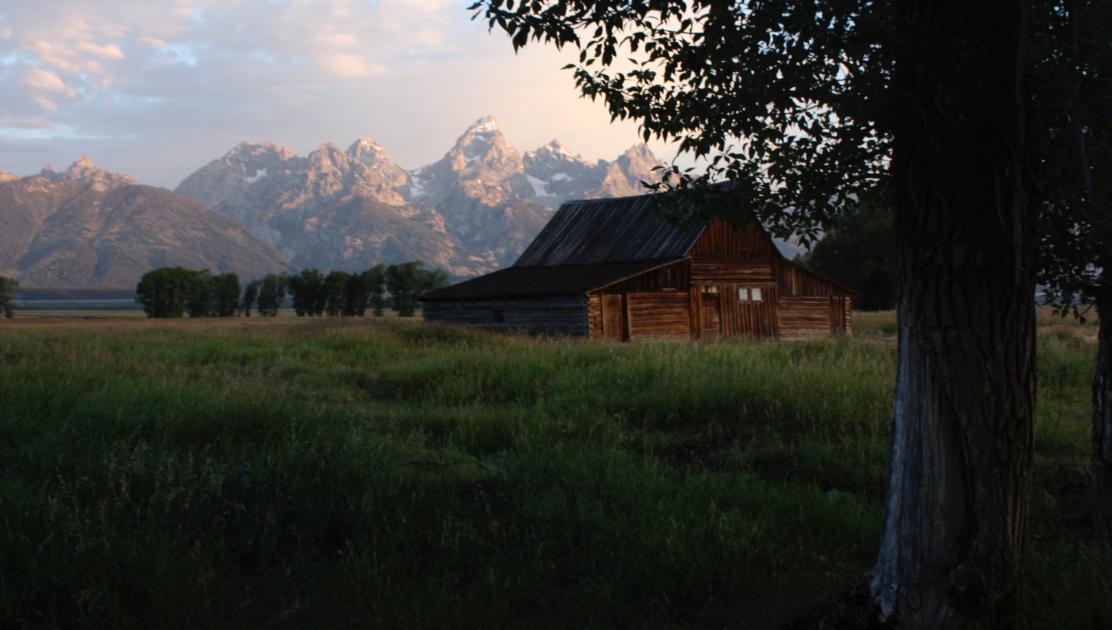Awakening to Your Inner Wyoming
On the Relationship Between Contemplative Practice and Nature
By Sara OvertonBuddhist teacher Joseph Goldstein was once waiting for take-out in a restaurant and the man helping him talked about a dream of moving to Wyoming. He longed for the open space, the beauty. Joseph said to the fellow, “You know, there’s an inner Wyoming.” This story always makes me smile when I think of Joseph, in the middle of a restaurant, giving an impromptu dose of Buddhist wisdom with his sincere clarity. I love the way the expanse of a Wyoming sky can open up a moment in an ordinary conversation in a restaurant.
Rodney Smith, the founder of Seattle Insight, tells of wanting to study with an esteemed meditation teacher in the Thai forest. He was rebuffed until a monk took him aside and counseled him to tell the teacher he wanted to stay to learn from the forest. At Rodney’s next request, the teacher lit up and said I have nothing to teach; the forest is the teacher here. He was allowed to stay. As Jack Kornfield has said, nature is truth. And the Buddha himself, sitting in the open air, became enlightened under the Bodhi tree.
During my first mindfulness-in-nature retreat, when my hand touched the sun-warmed ground, I felt a connection to the Earth I didn’t know was possible. It was as if the energy of the Earth connected with my own. There was no separation. It was grounding, warm, and it felt like home. I had done years of practice at Insight Meditation Society and Spirit Rock Meditation Center and had always loved walking on the land at both places. If I was upset, the forest and the land were able to hold me in the space and beauty in a way I couldn’t yet do for myself. I would look out the windows of the meditation hall at Spirit Rock to the soft hills and the landscape of Marin County and feel my spirit soar on my cushion. However, there was also a separation between the two for me. But that day on the Spirit Rock land, doing the practices guided by Mark Coleman, something changed. Through the mindfulness-in-nature practices, I experienced my connection with the Earth. I woke up to a sense of oneness that I hadn’t known I was missing.
Indigenous peoples know these truths. In most indigenous cultures, there is no sense of separation between humans and the natural world—animals are relations, as are plants. Though most of Western culture has lost this deep attunement to the land, tuning back into it allows us to tune back into the truth of who we are. The Earth is our body, offering us life and becoming part of us through the air we breathe, the water we drink, and the sun-kissed strawberries we eat.
I believe our great estrangement from nature is the foundational cause for global warming. And the antidote to any estrangement is intimacy. Mindfulness, or awareness, is one of the greatest vehicles for this because it opens us up to the truth of interconnection. And nature offers boundless lessons in our interbeing, as Zen Master Thich Nhat Hanh calls it. Emptiness, or oneness, is said to be the womb of compassion. Once we wake up to our oneness with all, compassionate action is the natural effect. And the Earth has never needed us to wake up to our interconnection with it more.
On the Spirit Rock land, we did simple things like a walking practice where we noticed the ground beneath our feet and how the earth supports us. We paired up with partners and took turns closing our eyes while the other person guided our hands to a flower or a tree to silently explore. There was an intimacy with the land that was astonishing. One scorching day, we sat on a green hillside facing the glorious blue sky and opened our eyes to the vast blue that surrounded us. We moved through the different meditations, sensing the elements of earth, sun, water, and air. On the sweet green land that held our seated bodies, we experienced the solidity of and our interconnection with the ground beneath us. We experienced the sun beating down on us, sweat pouring over our skin, and we recognized the sun and water elements inside and outside out bodies. The air element was in every breath that we took in from the grasses and trees all around us. Looking out into the vast sky that holds Earth, humans, and all the other beings, we opened to the sky-like nature of the mind.
In Buddhist teachings, the sun’s rays are used as a metaphor for the way loving-kindness is given freely to all. In nature, as the sun’s rays warm us, we experience this directly. Eckhart Tolle talks about the presence that is found in the natural world as being so strong and profound it can help us awaken the presence in ourselves, just as great teachers in human form do. Bodhisattvas—the beings in the Buddhist tradition whose essence is compassionate action—are said to be able to manifest as human beings, animals, or trees—whatever might be most useful to any being’s evolution at any time. “Mother Earth,” says Thich Nhat Hanh, “is the most beautiful Bodhisattva.”
The great spiritual teachers, including the natural world, teach us that from the smallest blade of grass to the stars, we are one. In a world of fast food, Twitter, and global warming, our inner Wyoming is our true home.
Sara Overton is an artist in New York City. She conceived of AWE, an art project to bring mindfulness in nature to city parks, green spaces, and everywhere. She and Mark Coleman are collaborating on the project.
Photo courtesy of Robert Ostheimer on Unsplash

Excellent. It is heart and mind opening article.
Thanks!!